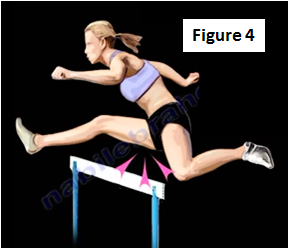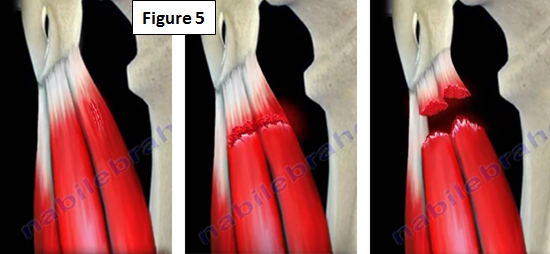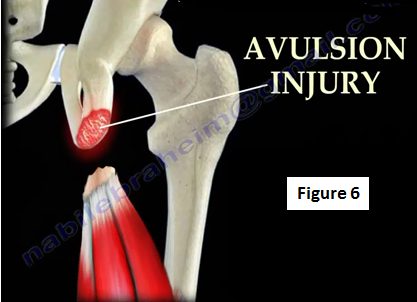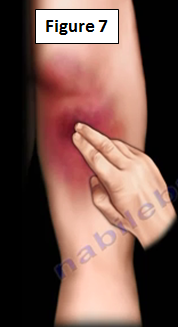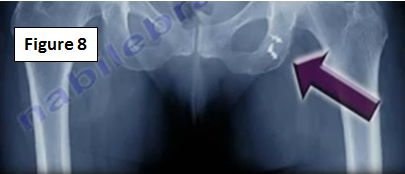The hamstrings are a group of muscles located on the back of the upper leg (thigh) (Figure 1).
The muscles of the hamstring are the semimembranosus, semitendinosus, and the biceps femoris (the long and short head) (Figure 2).
The proximal ends of the hamstring muscles originate from the ischial tuberosity in the rear of the pelvis. The muscles of the hamstring are all innervated by the sciatic nerve. The hamstring muscles are the major flexors of the knee and also aid in hip extension (Figure 3).
Injuries to the hamstring muscles primarily occur proximally and are a common source of chronic pain and injury in athletes.
What is the mechanism of injury?
It is often referred to as a hurdler's injury, athletes who attempt to clear hurdles are prone to injury due to excessive hamstring tension (Figure 4). Hamstring injuries occur as a result of hip flexion and knee extension.
Types of Hamstring Strains
Hamstring strains are classified into three different grades; minor tears within the muscle, partial tear within the muscle, and a complete muscle tear (Figure 5).
Most hamstring injuries in adults will occur at the musculocutaneous junction but injury may also occur at the insertion into the ischial tuberosity. Severe hamstring injuries where the tendon tears away with a fragment of bone are called avulsion injuries (Figure 6). Avulsion injuries are not common and typically occur in patients who are younger, skeletally immature athletes.
Clinical Examination
The patient will complain of a sharp pain located on the back of the thigh with popping or tearing of the muscle. The doctor will find an ecchymosis of the posterior thigh with a palpable mass in the middle of the thigh (Figure 7). The injury is usually diagnosed by an MRI.
Treatment
Strained or pulled hamstring can occur due to an insufficient warm up time before the activity. The patient should rest and ice the injury. They should use a compression bandage, elevation and physical therapy. Surgery is done in complete avulsion injuries with muscle retraction. Surgery should be done early. It is performed by making an incision on the back of the thigh, finding the retracted hamstring muscles and protecting the sciatic nerve. Anchors will be used in the ischium to repair the tendon to the tuberosity (Figure 8). In cases of a bony avulsion, screws may be used in the severe cases.
For more information on the thigh, follow the links below:
https://www.youtube.com/watch?v=duyifmf1-5A
https://www.youtube.com/watch?v=zSby5sZDOSw
https://www.youtube.com/watch?v=2ml3uBXUOAg
https://www.youtube.com/watch?v=1e3yq8RmoD8
https://www.youtube.com/watch?v=1NnLs1UtdLg
https://www.youtube.com/watch?v=34IvKVK89r8
For information on other topics, visit my YouTube channel:
https://www.youtube.com/user/nabilebraheim



